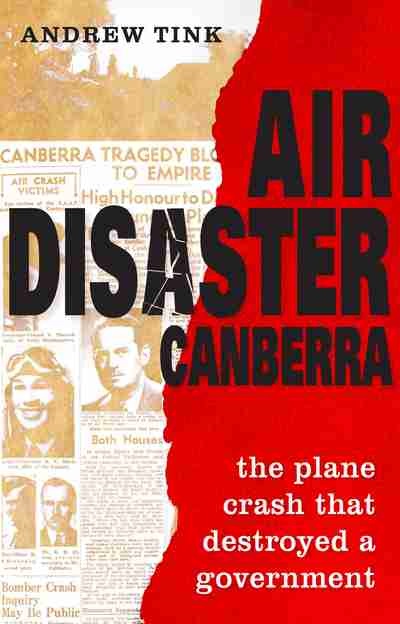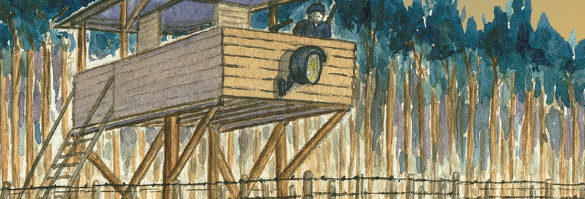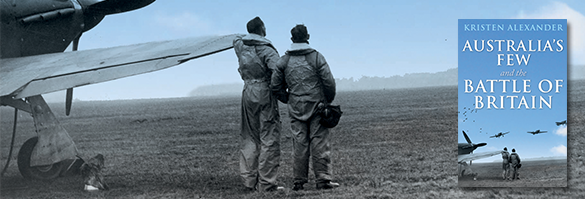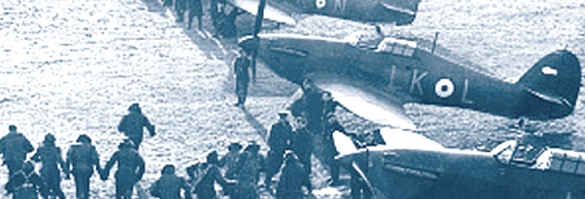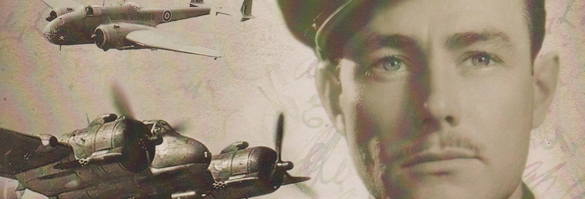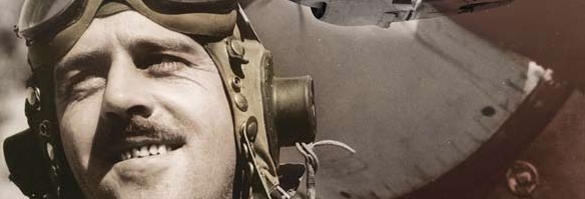Andrew Tink: Air Disaster Canberra. The Plane Crash that Destroyed a Government (Sabretache)
When I first mentioned Air Disaster Canberra to my military aviation friends there was a ripple of excitement. We had all heard about the crash, we knew some of the aspects of the story from the RAAF perspective, we all had our own theories about Bob Hitchcock’s involvement in the incident, but we had virtually no knowledge of the political consequences. We anticipated a good read and I was not disappointed. Nor, for that matter, was anyone else I know who read this remarkable book.
Air Disaster Canberra is divided into three sections: the political rise of the Anzac generation which includes the military backgrounds of key politicians, essential for an understanding of the significance of the loss of their potential contribution to the prosecution of the war; the last flight of Hudson A16-97 on 13 August 1940; and an account of the destabilisation and destruction of the Menzies government which led to John Curtin’s prime ministership in October 1941.
At the heart of Air Disaster Canberra are two arguments. Firstly, that the crash directly led to the change of government the following year and, secondly, that Jim Fairbairn had been at the controls of the Hudson when it crashed. Andrew Tink presents a well constructed case, puts a tragic accident into its proper political perspective, and blends historical background seamlessly into a well written narrative.
Andrew Tink occasionally overdoes the block quotes—mainly those relating to the inquiry transcripts—but some are pertinent. For instance, Brudenell White’s words when he accepted his temporary wartime return to duty are poignant in light of what was to come: ‘I do not want to act to the detriment of any permanent staff officer, and as soon as my services are unnecessary I want to return to the farm’. I also found Menzies’ recollection of his reaction to the death of his colleagues moving: ‘Gullett was dead; Street was dead; Fairbairn was dead; the most scholarly and technically talented soldier in Australian history, Sir Brudenell White whom I had recalled from retirement ... was dead.’ Another was Sergeant Jo Gullett’s account of the cold, clinical way in which his senior officer (he was at a British tactical training school at the time) informed him of the death of his father: ‘I have a message from your General Blamey to say that I am to inform you that your father was killed in an air accident yesterday’. He then rattled off the arrangements to return to Australia, concluding with ‘You may overdraw your pay if you wish. I am sorry about this, sergeant. I think that is all.’ These are the exceptions that prove that sometimes block quotes are better than authorial recasting.
This is Andrew Tink’s third book; his first two were biography—William Charles Wentworth: Australia’s greatest native son won ‘The Nib’ CAL Waverley Award for Literature—and his biographical skills are again displayed here: he is a particularly talented portrait painter and the reader gains a clear sense of the ten men who died: the politicians, Brigadier Geoffrey Street, Minister for the Army and Repatriation; James Valentine Fairbairn, the Minister for Air and Civil Aviation; Sir Henry Gullett, vice-president of the Executive Council and Minister in charge of Scientific and Industrial Research; General Sir Cyril Brudenell White, who came out of retirement to take up the appointment of Chief of the General Staff; White’s staff officer, Lieutenant Colonel Francis Thornthwaite; Fairbairn’s private secretary, Richard Elford; and the four RAAF crew, the Hudson’s pilot Flight Lieutenant Robert Edward Hitchcock, Pilot Officer Richard Frederick Wiesener, Corporal John Frederick Palmer and Aircraftman Charles Joseph Crosdale.
Andrew Tink points out Fairbairn had offered Arthur Fadden, the assistant minister to the treasurer a seat on the Hudson. He later retracted the offer because it had only been made because he understood Dick Elford would be travelling by train. But then Elford decided to stay in Melbourne an extra night to celebrate his wedding anniversary and thus take the seat on the Hudson. Fadden travelled safely by train and went on to become a short term wartime prime minister and long serving post war treasurer. Dick Elford climbed into the Hudson and did not alight at Canberra. It is to Andrew Tink’s credit that he presents this tragic circumstance simply and lightly, with no weighing of a potential greater political good of the surviving politician against the loss of the 30 year old loyal husband and father of twin sons.
For many years, Bob Hitchcock’s flying ability has been called into question, most notably by former RAAF Historian Chris Coulthard-Clark in The Third Brother and Hitchcock’s near contemporaries, Richard Kingsland and Herb Plenty. In arguing that Fairbairn was at the controls, Andrew Tink provides evidence attesting to Hitchcock’s skill with the Hudson and number of incident-free hours flown in this type. I was very pleased to see this reappraisal of Hitchcok’s airmanship, after all many fine pilots took time to develop their skills. Clive Caldwell, for one, admitted that he was not particularly good at flying when he started out, and Pat Hughes, who was a year behind Hitchcock at Point Cook, was ranked 28th in his course and assessed as having no outstanding qualities.
Andrew Tink claims that it was perfectly reasonable for Fairbairn to take the risk of landing the Hudson and that Fairbairn deserves his place in history as a respected ‘aviation hero, whose pioneering work, both before and during the war, helped to make flying safer for everyone’. I agree that Fairbairn should be remembered for his good work but I am not comfortable that Andrew Tink failed to acknowledge that if Fairbairn was at the controls, he was responsible for the deaths of nine men as well as his own. That aside, I was fascinated by Andrew Tink’s account of the demise of Hudson A16-97 and all on board. Ultimately, I was swayed by his reasoned speculation about Fairbairn and his careful analysis of the consequences of the loss of three cabinet ministers. I fully agree with his disappointment in the current state of the Canberra memorial to the crash’s victims. But where Canberra fails to honour, Air Disaster Canberra does not. This is a fine tribute to the men who died in the Hudson crash. Highly recommended.
